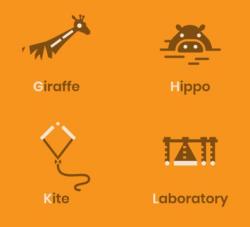 The Boy Scouts of America’s Scouting Magazine blog posted an article this week on using Google’s Morse keyboard and flash cards to teach Morse Code to Scouts.
The Boy Scouts of America’s Scouting Magazine blog posted an article this week on using Google’s Morse keyboard and flash cards to teach Morse Code to Scouts.
Morse is a requirement for the recently introduced Signs, Signals and Codes merit badge. It’s an expansion of the original Signaling merit badge, one of the first ones offered at the founding of the BSA in 1910. Signaling was eventually discontinued but was brought back just for the year 2010 for the BSA’s Centennial. I was a counselor for Signaling and taught Morse, Semaphore and Wig-Wag codes to eight Scouts in our troop, and all earned the badge (and three went on to earn their amateur radio licenses!). I taught the code by ear, in the usual letter groups, forming words with the letters learned as we went along. It took about eight sessions to get all the way through.
Back to the methods in the article, though. I downloaded the Google keyboard and tried out the Morse language module. Unfortunately, it doesn’t really allow you to key in Morse, as you would on a normal telegraph key, to enter characters. Rather, there’s a “dot” pad and a “dash” pad, and you tap out the elements, one after another (there’s no need for the rhythm that makes Morse Code what it is). Thus, to enter the letter Q you’d tap the dash-dash-dot-dash symbols on the screen.
I haven’t tried the Morse Typing Tutor game but it appears to be similar.
The author also mentions the use of “flash cards” that are supposed to teach code through cutesy mnemonics and pictures. It might suffice if you are trying to convey familiarity with the code so as to fulfill a requirement, but it does little to enable them to learn it to actually send and receive messages. The illustrations include tortured stretches like “hippo” for H, showing the four dots that make up the letter as two eyes and two nostrils, and “laboratory” for L, where there’s an array of laboratory glassware including test tubes and an Erlenmeyer flask arranged so their bases convey “short, long, short, short” and could easily be mistakenly rearranged in any order in your mind. (And what if you couldn’t remember whether the fire truck or jet aircraft in the other examples were going in the other direction?) Thus, you have to remember: L: Laboratory. Okay, three test tubes and a flask, arranged tube, flask, tube, tube, which is narrow, wide, narrow, narrow, or dot, dash, dot, dot, or diDahdidit. It’s not an easy leap and highly inefficient. This mnemonic method might work for memorizing the names of the Great Lakes, the periods of the Paleozoic Era, or the planets, but you wouldn’t learn a language by using words for letters and memorizing the order of the substitute words. (Imagine trying to remember the Spanish word ‘amigo’ with ‘My friend has an apple, mouse, inkwell, golfball, and oriole.’)
As one who uses it almost exclusively in the amateur radio bands, I appreciate the effort to teach Morse Code, but I would really encourage that better methods be used. I’m afraid that methods like these will just frustrate kids, who would put what they’ve learned aside as soon as the badge is sewn on their sash.
There are many “correct” ways to learn the Morse Code, including books, recordings, online tools and  instructor-led classes, and because it’s a language of sound, it should be taught by ear, not by looking at pictures or tables of dots and dashes. I taught the sounds of letters in groups based on how often they occur, then put together pairs of letters and short words for practice. Any method of teaching the code that involves memorizing pictures of dots and dashes not only does not help the student learn to receive Morse Code messages by ear, it actually damages his ability to learn by ear.
The SS&C requirements don’t specify that the Scout needs to send or receive code from memory, or at a given speed. They could simply refer to a chart, looking up each character as it is sent, or use one of the methods in the article in order to fulfill the requirement. However, if there’s any glimmer of hope of setting Scouts off on the right foot and instilling a spark of actual code proficiency, I suggest steering clear of these methods and take the time to teach them the right way.
This post first appeared on Bobwhite Blather.


